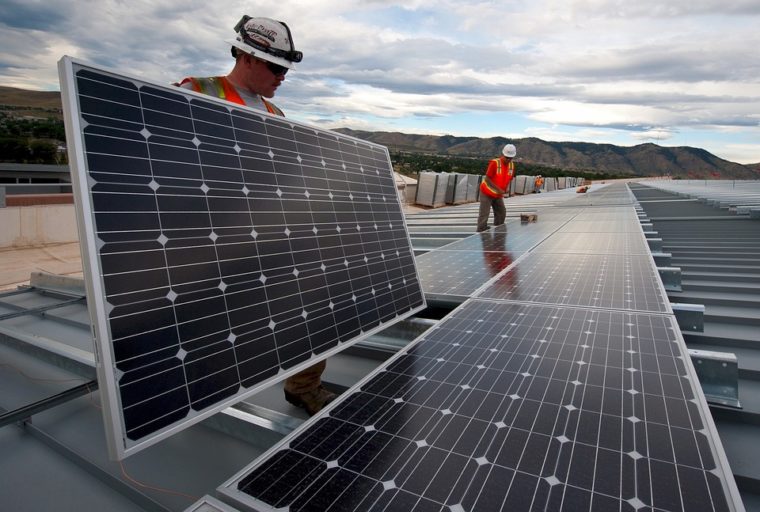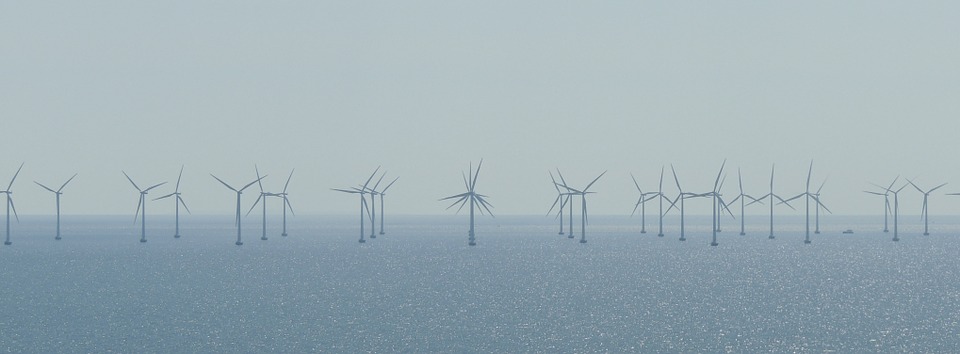
Although somewhat guarded because the Trump administration’s energy policies appear to favor fossil fuels, cities and states remain steadfast in their efforts to lower carbon emissions as they continue to embrace sustainability and renewable energy.
Energy experts say that approximately one-half of the growth in the U.S. renewable energy generation since 2000 can be attributed to renewable energy goals that state and local leaders have championed. Wind, solar and other renewables now contribute to what has become a $40 billion market.
A commitment to reduce federal regulations blamed for stifling energy industry growth was a promise made by President Trump during his campaign. Once elected, Interior and Energy Cabinet members were given a clear directive to “promote and execute” policies that would hasten energy independence and support the President’s pro-fossil fuels strategy.
That resulted in efforts to reverse more than 70 environmental rules that regulate the energy industry. Additionally, Trump withdrew the U.S. from the Paris Climate Agreement saying it put “onerous energy restrictions” on the U.S. and he imposed a 30 percent tariff on imported solar cells and modules. But, in spite of those actions, commitments to renewable energy and sustainability at the state and local levels of government have not declined.
Twenty-nine states and the District of Columbia have adopted Renewable Portfolio Standards (RPS) to ensure that a percentage of the electricity sold by utilities comes from renewable resources. Eight states have set renewable energy goals. Hawaii was the first state to set an RPS with a 100 percent renewables requirement, hoping to reach that goal by 2045. California is inching closer to passage of legislation that will require planning to meet its 100 percent RPS goal as well.
The emphasis on clean, renewable energy has created an uptick in interest in offshore wind production, solar arrays and other renewable projects. As renewable energy costs decline, even more cities and states are deploying renewable projects.
 Earlier this month, a memorandum of understanding was signed by New York power agencies and partners to study offshore wind transmission models. New York hopes to obtain 50 percent of its electricity from renewables by 2030. State officials plan to reach 2,400 megawatts (MW) of offshore wind during that time to power 1.2 million homes in the state. A solicitation for procurement of approximately 800 MW of offshore wind will be issued later this year with awards to be announced in 2019. In March, New York officials announced the nation’s largest state commitment to renewable energy projects in U.S. history.
Earlier this month, a memorandum of understanding was signed by New York power agencies and partners to study offshore wind transmission models. New York hopes to obtain 50 percent of its electricity from renewables by 2030. State officials plan to reach 2,400 megawatts (MW) of offshore wind during that time to power 1.2 million homes in the state. A solicitation for procurement of approximately 800 MW of offshore wind will be issued later this year with awards to be announced in 2019. In March, New York officials announced the nation’s largest state commitment to renewable energy projects in U.S. history.
In Arizona, state officials plan to add up to 500 MW of energy storage to the state’s solar energy system over the next 15 years. Arizona Public Service recently issued an RFP for outfitting its current solar plants with battery storage capacity. This would be one of the largest battery storage projects in the U.S.
 Some smaller local governments are turning to state grant funds and public-private partnerships to help decrease power costs. City leaders in Tremont, Ohio, approved installation of a solar array at a former landfill. The city is expected to save $400,000 in electricity costs for city buildings over the next two decades by purchasing power generated by the solar array.
Some smaller local governments are turning to state grant funds and public-private partnerships to help decrease power costs. City leaders in Tremont, Ohio, approved installation of a solar array at a former landfill. The city is expected to save $400,000 in electricity costs for city buildings over the next two decades by purchasing power generated by the solar array.
In Massachusetts, 80 municipalities will share nearly $14.8 million in competitive grant funding to finance clean energy projects. The goal is to reduce energy costs and carbon emissions. The funds will help defray the costs of renewable energy projects that enhance each community’s energy goals.
Some states have announced plans to use money received from a settlement in the Volkswagen emissions settlement for another type of project involving renewable energy – electric cars. Oregon received $72.9 million in the Volkswagen settlement and plans to set aside $10.9 million for a buildout of electric vehicle charging infrastructure. Virginia will also spend $14 million of its settlement funds on charging stations.
State and local government leaders continue to set goals for decreasing dependency on electricity generated with fossil fuels. Their lofty goals and their actions are creating a very robust renewable marketplace.
